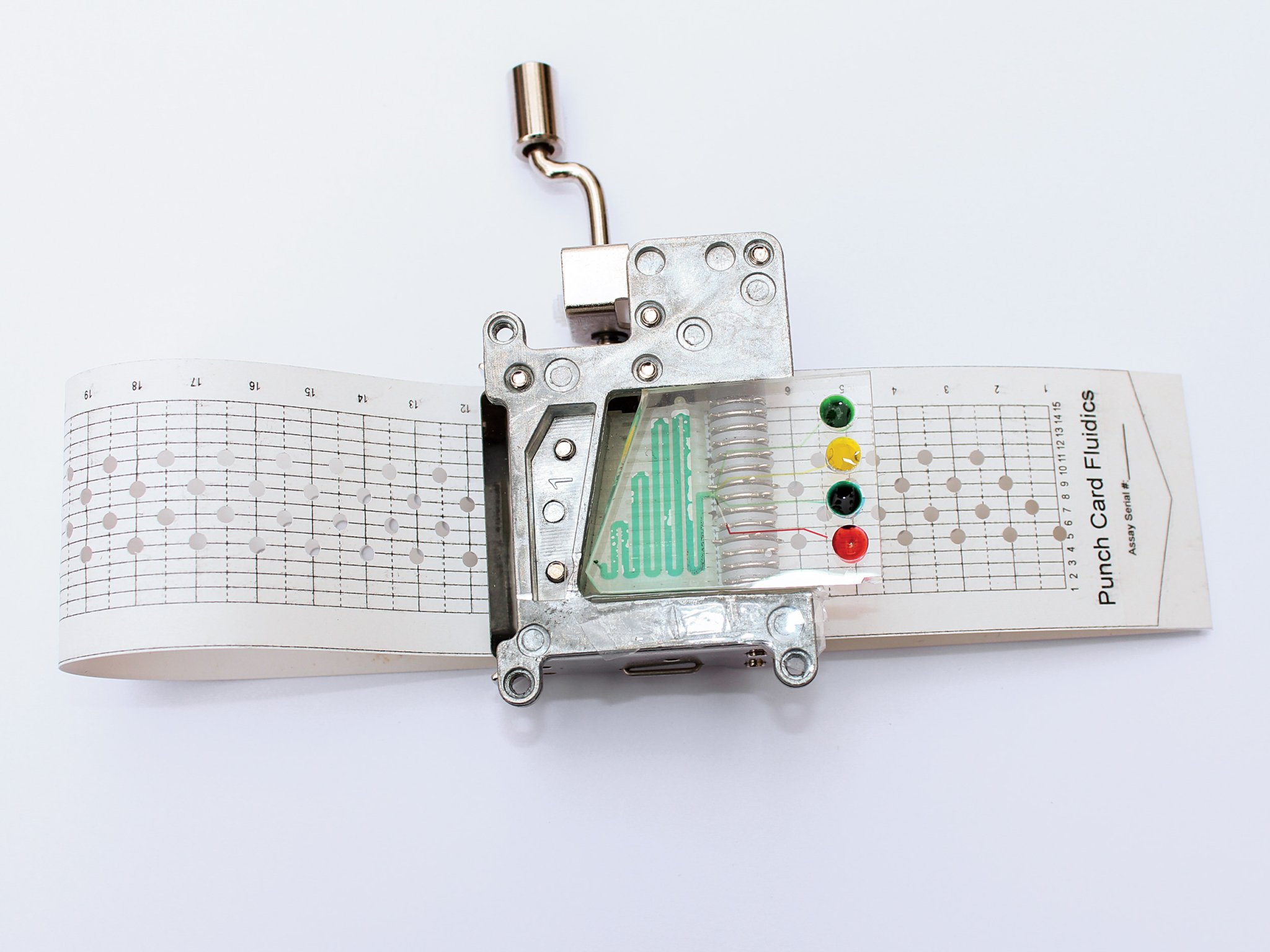

| 2015 Invention Award Winner | Category: Health |
|---|---|
| Inventors: | Manu Prakash and George Korir |
| Company: | Stanford University |
| Invention: | Punchcard Programmable Microfluidics |
| Development Cost To Date: | $50,000 |
| Maturity: | 4/5 |
One night in 2011, as Manu Prakash turned the handle on a music box, he realized the simple mechanism–a crank rotating gears–could also run a programmable chemistry set. Most “lab-on-a-chip” devices require computers, technicians, and expensive laboratories to pump precise amounts of liquid through a microfluidic chip. But a hand-cranked mechanism could eliminate all that; Prakash’s idea wouldn’t even need power. “What we’re doing here is steampunk chemistry,” he says.
Prakash, who heads a Stanford University research lab, recruited graduate student George Korir to help create a sophisticated scientific device that works like a music box. First, the duo had to figure out how paper punched with patterns of holes–each keyed to a different chemical reaction–could activate tiny mechanical pumps and valves to generate nanoliter droplets. Twenty-some prototypes later, they’re preparing their apple-size invention, Punchcard Programmable Microfluidics, for mass production. While conventional microfluidic pumps can cost $1,500 each, Prakash says this device, which contains 15 pumps, will run $5.
Relatively simple to use, the instrument will enable anyone with a chip and a hole punch to perform a complex chemical reaction, such as diagnosing disease from a blood sample. Even lightly trained medical providers in rural areas and developing countries could identify, and thus control, fatal illnesses. “I grew up in Kenya and saw a lot of preventable suffering,” Korir says, “so I’m passionate about getting the right tools to the people who stand between life and death.”
How It Works
After adding a sample, such as blood, the user selects a punch card for a given reaction and cranks it past gears with teeth.
As one tooth slides into a punched hole, another squeezes a fluid channel to pump a chemical through a removable microfluidic chip.
Punched holes can also trigger the release of a single droplet, for precise volume control.
Up to 15 different chemicals react with one another as they travel along channels etched on the chip.
The user examines the results via embedded lenses that magnify images hundreds of times.

Advice For Inventors, From Bre Pettis
Invent things that make people’s lives easier, safer, or more creative. Explore big problems—what could you invent to get me from New York City to London in 15 minutes? Explore small problems –what would it take to manufacture nanoscale ball bearings?
This article was originally published in the May 2015 issue of Popular Science. For more extraordinary innovations and tips on how to be an inventor, click through the rest of our Invention Awards feature.
